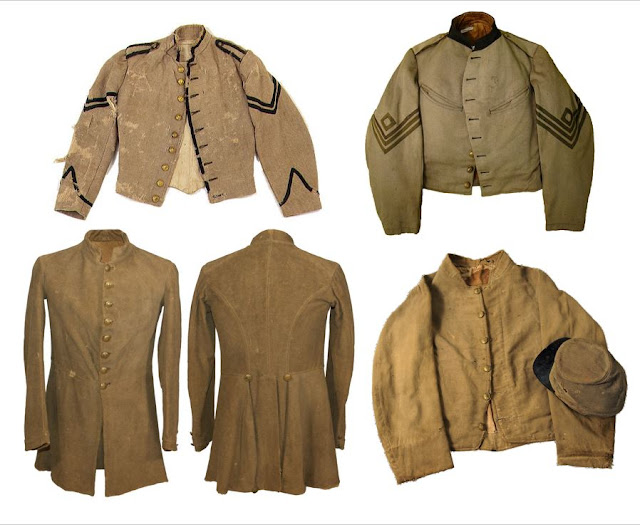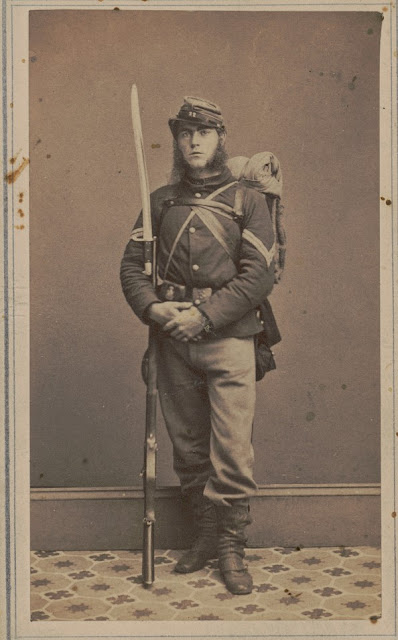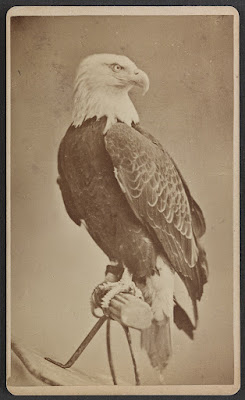They Rode Into Our Works: With Casement’s Brigade at Franklin
Positioned in the left center of the Federal line at the Battle of Franklin, Colonel John Casement's brigade bore some of the heaviest attacks of the engagement. Captain James S. Putnam, serving on Colonel Casement's staff as acting assistant adjutant general, wrote three letters home to his wife in Illinois describing his experiences.
"The enemy formed under cover of a wood and advanced in columns driving in our front line without firing," he wrote. "As soon as they had all got inside our works and when the enemy was within 200 yards, we opened a murderous fire of musketry, grape, and canister that from the batteries plowed at various points along the lines. Still, they continued to advance till in many places they actually reached our works. At the 23rd Indiana Battery, they came right into the embrasures and were knocked down by the men with the spikes of the guns. The 104th Ohio, a regiment of the First Brigade placed on our right, gave way at one time and for a moment things looked a little dubious, but in the next moment two fresh regiments were sent into the line thus left vacant and the advance of the enemy was soon checked. But they would rally and come again under such a fire as it seemed no single man could find a place to stand in and not get killed."
Captain Putnam’s accounts first saw publication in the December 10, 1864, and December 24, 1864, editions of the Waukegan Weekly Gazette.
Camp of
Second Brigade, Nashville, Tennessee
December 1, 1864
Dear wife,
I am most happy to be able to write
you at this time for I know the newspaper reports of our battle yesterday will
very naturally cause you unusual anxiety on my behalf. We fought yesterday one
of the most bloody and, on the part of the enemy, one of the most desperate and
terrible battles the history of this cruel and wicked rebellion has yet
furnished.
We had retired from Columbia the night before and were
closely followed by the enemy who in that act probably greatly erred in his
estimate of the strength of our works of defense which we constructed in the
space of three hours time. These were, nevertheless, quite formidable and it
was reserved for the 23rd Army Corps then and there to make its mark
and win a proud and enduring fame. We were supported by the First and Third
Division of the 4th Corps while the Second and Third Divisions of
the 23rd Corps withstood the long, continued, most persistent and
furious attack of two corps of the Rebels, led on by officers of unequalled
daring and bravery who rode on to our works. They were shot down by our
pistols, their men following them and their brains beaten out with our muskets.
Colonel W. Scott Stewart [65th Illinois] captured one battle flag, one brigadier
general, and one colonel besides a number of subordinate officers and 100 men.
We captured altogether some 1,500 prisoners and left 4,000-6,000 Rebel killed
and wounded on the field. The roar of the artillery and the rattle of musketry
was grand and terrible and terribly destructive to the Rebels as they advanced
in columns on our works. Our losses are very light; indeed, no one was hurt in
the 65th Illinois although it suffered a loss of 29 men two days
before in a skirmish. I had many narrow escapes but am most thankful that my
life was spared to be able to communicate again with you.
Under the cover of the night we removed to this city and it is my opinion that we have so great a loss and moral defeat upon the enemy that any attack upon this place is altogether improbable. We have more than double the force here with which we fought yesterday and the result, if a battle is fought here, cannot be doubtful.
Headquarters,
Second Brigade, Nashville, Tennessee
December 4, 1864
Dear wife,
In reference to the operations of the
enemy, there is nothing particularly new. In an attempt to lay a pontoon bridge
last night, they were badly defeated and a considerable number of them were
captured and their pontoon boats between the city and the gunboats below were
destroyed.
I will now tell you a little more
about the Battle of Franklin. Our lines were in the form of a horseshoe from
the river above to the river again below the town and the lines of the enemy
were formed entirely around or outside of ours, connecting the same points and
about half a mile in front of us. The enemy formed under cover of a wood and
advanced in columns driving in our front line without firing. As soon as they
had all got inside our works and when the enemy was within 200 yards, we opened
a murderous fire of musketry, grape, and canister that from the batteries
plowed at various points along the lines.
Still, they continued to advance till in many places they
actually reached our works. At the 23rd Indiana Battery, they came
right into the embrasures and were knocked down by the men with the spikes of
the guns. The 104th Ohio, a regiment of the First Brigade placed on
our right, gave way at one time and for a moment things looked a little
dubious, but in the next moment two fresh regiments were sent into the line
thus left vacant and the advance of the enemy was soon checked. But they would
rally and come again under such a fire as it seemed no single man could find a
place to stand in and not get killed.
Thus, they continued charge after charge till they were so
completely shattered, routed, and broken up that they could no longer preserve
an organization. Then they all fled in precipitate rout. Their losses are
estimated at 4,500-5,000 men; of these, 1,800 are prisoners including two
generals and about 130 other officers. I passed over the field after dark and
the dead and wounded covered the ground. Our losses are not more than 300-400
and these are mostly slightly wounded.
After the battle, we crossed the railroad bridge and came on to Nashville, the enemy not following us very closely. Our division bore the brunt of the attack and done it nobly, too. A small portion of the Second Division was on the left, the rest being in position on the other side of the river while the 4th Corps was mostly there, too, only a part of our division being on the right of our line. We only hope Mr. Hood will repeat his rashness here and I think we can make an end of his army.
 |
| Brigadier General John Adams was struck down upon the line of works held by Casement's brigade. |
Camp on the
defenses of Nashville, Tennessee
December 13, 1864
(To the
editors of the Waukegan Weekly Gazette)
Friend Cory,
Since I wrote you last, on the 30th
ultimo we encountered the forces of the enemy at Franklin. This village is located
on the Little Harpeth, a stream of no considerable dimensions over which at
this point the only crossing in on the railroad bridge. It is about 18 miles
distant from this city. Our lines were formed to cover and protect the crossing
of the trains extending from Harpeth above to the Harpeth below the town. They
were protected by a slight trench and breastwork of earth under which our brave
boys anxiously awaiting the approach of the enemy while the long line of wagon
trains were rapidly and in good order hurried over the bridge and hurried along
towards this city.
Our cavalry covered the flanks thus
securing us against the possible flank movement of the enemy by crossing the
river above or below us. Skirmishing ensued early in the afternoon with the
enemy’s cavalry and at precisely 4 p.m., his infantry appeared advancing in
column. The ground in our front for a mile and a half was an undulating plain
on all parts of which the movements of the enemy could be distinctly seen. Our
forces, the 4th and 23rd Corps, numbered about 25,000
effective men while the three corps of the enemy (Cheatham, Stewart, and Lee)
were by their own reports at least 34,000 strong.
The Rebel leader had ordered a charge. His men were brave,
the officers desperate, and never did bravery and desperation continue in a
more persistent and determined assault. From 4-8 o’clock, four mortal hours,
did these doomed men continue in charge after charge to hurl themselves with
the irresistible fury of an avalanche upon our unyielding lines of steel and
lead and iron hail. With their stars and bars planted on our parapets, the
color bearers fell in the ditch. With their hands on the very guns of our
rifled batteries, their brains were dashed out with the hand spikes of those
guns. They rushed upon our lines with foolhardy and frenzied desperation and
they were hurled from them in the most sanguinary, utter, and indescribable destruction.
At 8 o’clock, the battle was substantially over though
skirmishing of a lively sort continued until after 10 p.m. At this time, our
front lines were again advanced and we thus occupied the field of blood. A
sight (or rather sounds for darkness covered the scene from view) was there
which I hope never to encounter again. The mangled, dead, and wounded bodies of
more than 6,000 rebels filled the ditches and covered the limited plain in
front of our lines.
The Rebel General Patrick Cleburne was killed by a shell at
the very outset. Brigadier General John Adams fell in front of the gallant, veteran
65th Illinois and his personal effects were collected and sent by
flag of truce to his friends in the Rebel lines. Colonel William Scott Stewart
was allowed to retain Adams’ pistol as being contraband of war. Colonel Stewart
also captured a Colonel Stephens [Colonel Marcus D.L. Stephens, 31st
Mississippi?] with several other officers and a considerable number of
prisoners, arms, etc. The noble little Second Brigade stood firm as a rock from
first to last; not a man left the lines with gallantry rarely equaled and
unsurpassable. Its commanding officer, Colonel John S. Casement, on seeing the
lines of an adjoining brigade waver and almost break, quickly moved to the spot
and by the example of his own startling energy, courage, and bravery, soon
restored the order and solidity of the lines and prevented a complete breach
which might have proved fatal to the fortunes of the day.
General Cox, also, was in the thickest of the fight, calm and
collected as if on parade, he directed the movements of the 23rd
Corps to the admiration of all, both officers and men. General Stanley,
commanding the 4th Corps, is mentioned in the highest terms of
praise and General Schofield, in a position where he could view all the
movements on the field, was the master spirit, directing the whole. The losses
on our part are considerable, though small when compared to those of the enemy.
In the 65th Illinois, the
casualties are but few owing chiefly to the good cover afforded by our works.
And it gives me great pleasure to add that our Lake County boys, every one,
escaped unhurt. The whole army did its duty bravely, nobly, well. Under cover
of the night, General Schofield retired to the position we now occupy. Here
Hood again confronts us, but he keeps at a very respectable distance and
appears to be in no hurry to repeat the Franklin tactics.
Our forces have been augmented somewhat since reaching this point and all are now hopeful, confident, nay defiant. “Let Hood come and the sooner the better,” say the boys. And so say all of us, let him come. Weather very wintry the past three days as snow and ice abound. More as time permits.
Very truly
yours,
James S.
Putnam
Captain, 65th Illinois Vols, A.A.G., Second Brigade, Third Division, 23rd Army Corps
To learn more about the Battle of Franklin, please check out the following posts:
Source:
Letters from
Captain James S. Putnam, Co. F, 65th Illinois Volunteer Infantry (on
detached duty as Assistant Adjutant General on Colonel John S. Casement’s
brigade staff), Waukegan Weekly Gazette (Illinois), December 10, 1864,
pg. 3; also, December 24, 1864, pg. 2












Comments
Post a Comment